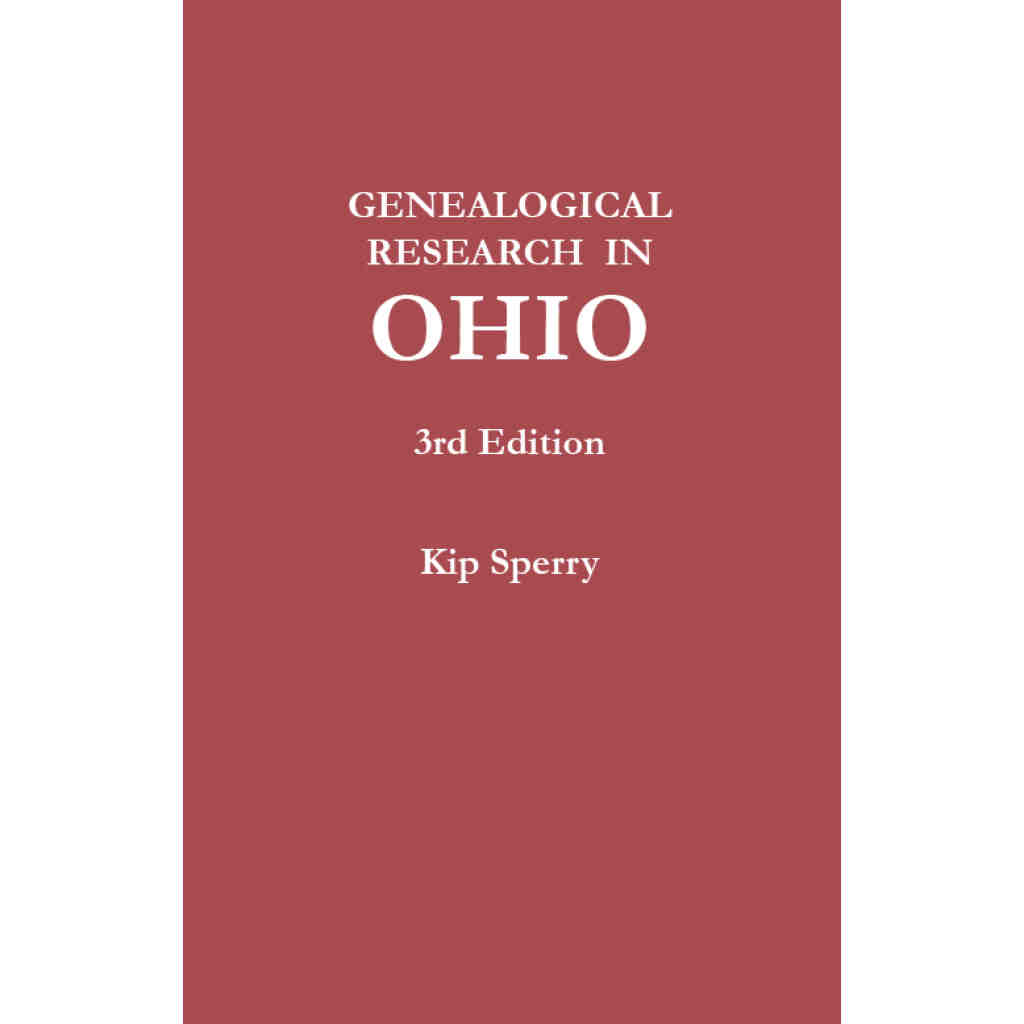
NGSQ Give High Marks to Third Edition of ‘Genealogical Research in Ohio’
The September 2024 issue of the National Genealogical Society Quarterly contains reviews of several recent Genealogical.com (Genealogical Publishing Company) titles. We will share them with our readers over the next several weeks. Here’s what the NGSQ had to say about the new Third Edition of Genealogical Research in Ohio, by Kip Sperry.
Genealogical Research in Ohio. 3rd ed. By Kip Sperry. Published by Genealogical Publishing Co., Inc.; 3600 Clipper Mill Road; Suite 229; Baltimore, MD 21211-1953; www.genealogical.com; 2023. ISBN 978-0-8063-2129-5. xiv, 351 pages. Bibliography, indexes. Paperback. $45.00.
Twenty years ago Kip Sperry published the second edition of Genealogical Research in Ohio. Sperry updates this, his third edition, to serve an audience that often reaches for online records as a starting point. He has preserved much information from the previous editions while adding references to Internet sources, giving researchers a more inclusive list of resources.
Sperry begins with a brief history and chronology of Ohio before delving into repositories and record sources. He covers larger repositories (Ohio History Connection, the Ohio Genealogical Society library) and smaller ones (Ohio Genealogical Society chapters, FamilySearch Centers and affiliates), and other major genealogical collections.
The bulk of the book focuses on indispensable record collections that are a must for any genealogist researching Ohio. He covers the usual vital records, as well as ethnic records, family and home sources, and even school records. Sperry identifies several repositories and sources that online researchers may not have known about or considered, such as institutional records (like asylum records and records of the Freemasons). He also provides information on which records are extant, including censuses and mortality schedules. He suggests alternate record sets to use in the absence of traditional sources. For those sources only briefly mentioned, he provides alternatives that provide more detailed information. Sperry includes maps in this edition: early Ohio maps, early migration routes to Ohio, and county boundary changes.
The author points out in the preface that some information may appear outdated but was included for its historical reference value. Online repositories such as FamilySearch are included, but the author does not provide a guide to what Ohio records can be found there, instead focusing on what general types of collections are accessible. He also references microfilm resources at repositories, many of which are now online; however, he acknowledges that Internet resources now render some of these older formats obsolete.
The strength of this book is its breadth and the depth of repositories and record collections it covers. Beginners to Ohio research and experienced researchers will find new resources that will enhance their knowledge of this important Gateway to the West.
Deanna Korte Pataskala, Ohio
deanna@dekgenealogy.com




